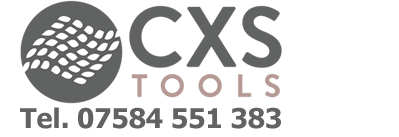Which abrasive should I use?
Posted by Nicholas Mayne at
With such a wide variety of abrasives, it is hard to decide which type of abrasive is most suitable for your sanding needs. There are several main categories –
Sanding Paper – sheets or rolls
Sanding Cloth – cloth backed abrasives
Net Abrasives – Abrasives mounted on a net material to allow dust extraction
Foam Backed – foam backed abrasive to provide even pressure on all parts
Non-woven mesh – Nylon non-woven mesh for fine sanding
For general sanding on flat surfaces, sanding paper used with a sanding block comes out the cheapest. Sandpaper varies in price considerably, but other factors like the durability and cutting edge can make considerable quality differences which cannot be seen, but are noticed when in use.
Sanding cloth has a higher durability, but the flexibility varies between makes and what they are designed to be used for. Thicker, stiffer cloths or paper can be ideal for various drum sanders. More flexible cloths, like the VSM Vitex, is good for wood turning both for flexibility and durability. In the past, the VSM KK532F with a stearate coating has been used as a comparison standard with other abrasives to check durability and finish quality. One of the only cloth abrasives that go as fine as P600.
Net Abrasives, like Mirka Abranet or SIANET, are designed to allow dust extraction from the sanding surface, which can help minimize clogging. Being on a net backing, finer grits may be needed to have a similar finish to close grain sanding paper or cloth. These come in strips or discs. Using the discs on an orbital sander with an extractor is ideal when sanding walls for decoration or finishing large flat surfaces. Hand sanding with strips can be improved if the strips are placed on a sanding block that allows extraction.
Foam backed abrasives are designed to provide an even pressure on the material you are sanding. The sanding surface can be open or closed. Open surfaces are useful for wet & dry sanding as water can help clear the particles away and minimize clogging and heat generation.
Non-woven mesh - or Nylon Web - provides fine to ultra-fine grits, and being made from nylon does not react with materials like wood unnecessarily.
Many lots of sanding can use more than one type of abrasive. The best way is to try various methods or abrasive types to see which ones work best for yourself. For many years, I have been wood turning and I still go back to my favourite, which is the VSM sanding cloth, but for very fine work sandpaper can get into tight crevices to sand where others cannot.
Share this post
- 0 comments
- Tags: Indasa, Net Abrasives, Nylon Web, Sanding Cloth, Sanding Discs, Sandpaper, VSM, VSM Vitex
0 comments
